|
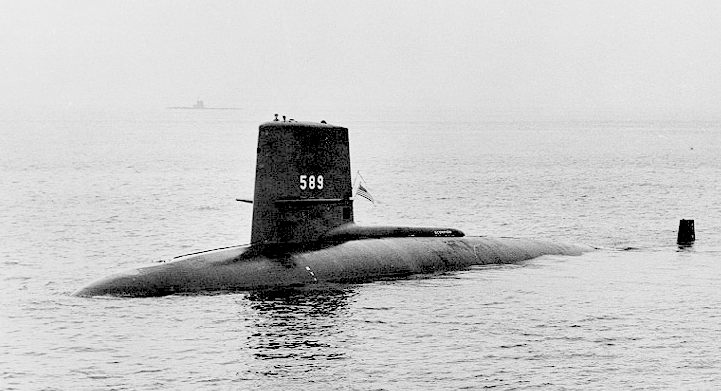
The
USS Scorpion
The
USS Scorpion (SSN-589) was a Skipjack-class nuclear submarine of the United States Navy and the sixth vessel of the US Navy to carry that name.
Scorpion was lost on 22 May 1968, with 99 crewmen dying in the incident. The USS Scorpion is one of two nuclear submarines the US Navy has lost, the other being USS Thresher. It was one of four mysterious submarine disappearances in 1968; the others being the Israeli submarine INS Dakar, the French submarine Minerve (S647) and the Soviet submarine K-129.
Scorpion's keel was laid down 20 August 1958 by the Electric Boat division of General Dynamics Corporation in Groton. She was launched 19 December 1959, sponsored by Mrs. Elizabeth S. Morrison, the daughter of the last commander of the World War II-era USS Scorpion (which was also lost with all hands, in 1944). Scorpion was commissioned 29 July 1960, Commander Norman B. Bessac in command.
MAY 1968 DISAPPEARANCE
For an unusually long period of time, beginning shortly before midnight on 20 May and ending after midnight 21 May, Scorpion attempted to send radio traffic to Naval Station Rota in Spain but was only able to reach a Navy communications station in Nea Makri,
Greece, which forwarded Scorpion's messages to ComSubLant. Lt John Roberts was handed Commander Slattery's last message, that he was closing on the Soviet submarine and research group, running at a steady 15 knots at 350 feet 'to begin surveillance of the Soviets'. Six days later the media reported she was overdue at Norfolk.
SEARCH 1968
The Navy suspected possible failure and launched a public search. Scorpion and her crew were declared "presumed lost" on 5 June. Her name was struck from the Naval Vessel Register on 30 June. The public search continued with a team of mathematical consultants led by Dr. John Piña Craven, the Chief Scientist of the U.S. Navy's Special Projects Division. They employed the methods of Bayesian search theory, initially developed during the search for a hydrogen bomb lost off the coast of Palomares, Spain, in January 1966 in the Palomares B-52 crash.
Some reports indicate that a large and secret search was launched three days before Scorpion was expected back from patrol. This, combined with other declassified information, leads to speculation that the US Navy knew of the Scorpion's destruction before the public search was launched.
At the end of October 1968, the Navy's oceanographic research ship, Mizar, located sections of the hull of Scorpion on the seabed, about 740 km (400 nmi; 460 mi) southwest of the
Azores, under more than 3,000 m (9,800 ft) of water. This was after the Navy had released sound tapes from its underwater "SOSUS" listening system which contained the sounds of the destruction of Scorpion. The court of inquiry was subsequently reconvened and other vessels, including the bathyscaphe Trieste II, were dispatched to the scene, collecting many pictures and other data.
Although Craven received much credit for locating the wreckage of Scorpion, Gordon Hamilton, an acoustics expert who pioneered the use of hydroacoustics to pinpoint Polaris missile splashdown locations, was instrumental in defining a compact "search box" wherein the wreck was ultimately found. Hamilton had established a listening station in the Canary Islands which obtained a clear signal of what some scientists believe was the noise of the vessel's pressure hull imploding as she passed crush depth. A Naval Research Laboratory scientist named Chester "Buck" Buchanan, using a towed camera sled of his own design aboard Mizar, finally located Scorpion. The towed camera sled, which was fabricated by J. L. "Jac" Hamm of Naval Research Laboratory's Engineering Services Division, is housed in the U.S. Navy Museum. Buchanan had located the wrecked hull of Thresher in 1964 using this technique.
OBSERVED DAMAGE
It would appear that the bow of Scorpion skidded upon impact with the globigerina ooze on the sea floor, digging a sizable trench. The sail had been dislodged as the hull of the operations compartment upon which it perched disintegrated, and was lying on its port side. One of Scorpion's running lights was in the open position as if it had been on the surface at the time of the mishap, although it may have been left in the open position during the vessel's recent nighttime stop at Rota. One Trieste II pilot who dived on Scorpion said the shock of the implosion may have knocked the light into the open position.
The secondary Navy investigation – using extensive photographic, video, and eyewitness inspections of the wreckage in 1969 – offered the opinion that Scorpion's hull was crushed by implosion forces as it sank below crush depth. The Structural Analysis Group, which included Naval Ships Systems Command's Submarine Structures director Peter Palermo, plainly saw that the torpedo room was intact, though it had been pinched from the operations compartment by massive hydrostatic pressure. The operations compartment itself was largely obliterated by sea pressure and the engine room had telescoped 50 ft (15 m) forward into the hull by collapse pressure, when the cone-to-cylinder transition junction failed between the auxiliary machine space and the engine room.
The only damage to the torpedo room compartment appeared to be a hatch missing from the forward escape trunk. Palermo pointed out that this would have occurred when water pressure entered the torpedo room at the moment of implosion.
NAVY INVESTIGATIONS
Court of Inquiry report: 1968
Shortly after her sinking, the Navy assembled a Court of Inquiry to investigate the incident and to publish a report about the likely causes for the sinking. The court was presided over by Vice Admiral Bernard L. Austin, who had presided over the inquiry into the loss of Thresher. The panel's conclusions, first printed in 1968,[citation needed] were largely classified. At the time, the Navy quoted frequently from a portion of the 1968 report that said no one is likely ever to "conclusively" determine the cause of the loss.
The Clinton administration declassified most of this report in 1993, and it was then that the public first learned that the panel considered that a possible cause was the malfunction of one of Scorpion's own torpedoes.
NAVAL ORDNANCE LABORATORY REPORT 1970
An extensive, year-long analysis of Gordon Hamilton's hydroacoustic signals of the submarine's demise was conducted by Robert Price, Ermine (Meri) Christian and Peter Sherman of the Naval Ordnance Laboratory. All three physicists were experts on undersea explosions, their sound signatures, and their destructive effects. Price was also an open critic of Craven. Their opinion, presented to the Navy as part of the Phase II investigation, was that the death noises likely occurred at 2,000 ft (610 m) when the hull failed. Fragments then continued in a free fall for another 9,000 ft (2,700 m). This appears to differ from conclusions drawn by Craven and Hamilton, who pursued an independent set of experiments as part of the same Phase II probe, demonstrating that alternate interpretations of the hydroacoustic signals were possibly based on the submarine's depth at the time it was stricken and other operational conditions.
The Structural Analysis Group (SAG) concludes that an explosive event is unlikely, and are highly dismissive of Craven and Hamilton's tests. The SAG physicists argued that the absence of a bubble pulse, which invariably occurs in an underwater explosion, is absolute evidence that no torpedo explosion occurred outside or inside the hull. Craven had attempted to prove Scorpion's hull could "swallow" the bubble pulse of a torpedo detonation by having Gordon Hamilton detonate small charges next to steel, air-filled containers. It should also be pointed out that the massive hull of the Russian submarine Kursk, when its torpedoes detonated at the time of its loss on 12 Aug 2000, was ripped open by hydrogen peroxide-fueled torpedoes, and emitted a huge bubble pulse that was transmitted to geophones across Europe. With a pressure hull twice the size of Scorpion's, the accident indicated even a massive hull could not absorb the bubble pulse.
The 1970 Naval Ordnance Laboratory "Letter", the acoustics study of Scorpion destruction sounds by Price and Christian, was a supporting study within the SAG report. In its conclusions and recommendations section, the NOL acoustic study states: "The first SCORPION acoustic event was not caused by a large explosion, either internal or external to the hull. The probable depth of occurrence...and the spectral characteristics of the signal support this. In fact, it is unlikely that any of the Scorpion acoustic events were caused by explosions."
The Naval Ordnance Laboratory based much of its findings on an extensive acoustic analysis of the torpedoing and sinking of Sterlet in the
Pacific in early 1969, seeking to compare its acoustic signals to those generated by Scorpion. Price found the Navy's scheduled sinking of Sterlet fortuitous. Nonetheless, Sterlet was a small World War II-era diesel-electric submarine of a vastly different design and construction than Scorpion with regard to its pressure hull and other characteristics. Its sinking resulted in three identifiable acoustic signals as compared to Scorpion's 15. The mathematical calculations Price used remain unknown to the public.
The NOL acoustics study provided a highly debated explanation as to how Scorpion may have reached its crush depth by anecdotally referring to the near-loss incident of the diesel submarine Chopper in January 1969, when a power problem caused her to sink almost to crush depth, before surfacing.
In the same May 2003 N77 letter excerpted above (see 1. with regard to the
Navy's view of a forward explosion), however, the following statement appears to dismiss the NOL theory, and again unequivocally point the finger toward an explosion forward:
The Navy has extensively investigated the loss of Scorpion through the initial court of inquiry and the 1970 and 1987 reviews by the Structural Analysis Group. Nothing in those investigations caused the Navy to change its conclusion that an unexplained catastrophic event occurred.
ENVIRONMENTAL CONCERNS
Today, the wreck of Scorpion is reported to be resting on a sandy seabed at the bottom of the Atlantic Ocean in approximately 3,000 m (9,800 ft) of water. The site is reported to be approximately 400 nmi (740 km) southwest of the Azores Islands, on the eastern edge of the Sargasso Sea. The actual position is 32°54.9'N, 33°08.89'W. The U.S. Navy has acknowledged that it periodically visits the site to conduct testing for the release of nuclear materials from the nuclear reactor or the two nuclear weapons aboard her, and to determine whether the wreckage has been disturbed. The Navy has not released any information about the status of the wreckage, except for a few photographs taken of the wreckage in 1968, and again in 1985 by deep water submersibles.
The Navy has also released information about the nuclear testing performed in and around the Scorpion site. The Navy reports no significant release of nuclear material from the sub. The 1985 photos were taken by a team of oceanographers working for the Woods Hole Oceanographic Institution in Woods Hole, Massachusetts.
The U.S. Navy has periodically monitored the environmental conditions of the site since the sinking and has reported the results in an annual public report on environmental monitoring for U.S. nuclear-powered ships and boats. The reports provide specifics on the environmental sampling of sediment, water, and marine life that is done to ascertain whether the submarine has significantly affected the deep-ocean environment. The reports also explain the methodology for conducting this deep sea monitoring from both surface vessels and submersibles. The monitoring data confirm that there has been no significant effect on the environment. The
nuclear fuel aboard the submarine remains intact and no uranium in excess of levels expected from the fallout from past atmospheric testing of nuclear weapons has been detected by the Navy's inspections. In addition, Scorpion carried two nuclear-tipped Mark 45 anti-submarine
torpedoes (ASTOR) when she was lost. The warheads of these torpedoes are part of the environmental concern. The most likely scenario is that the plutonium and uranium cores of these weapons corroded to a heavy, insoluble material soon after the sinking, and they remain at or close to their original location inside the torpedo room of the boat. If the corroded materials were released outside the submarine, their large specific gravity and insolubility would cause them to settle down into the sediment.
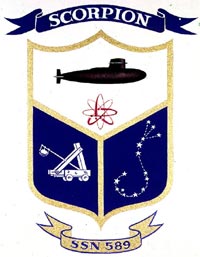
CALL FOR INQUIRY 2012
In November 2012, the U.S. Submarine Veterans, an organization with over 13,800 members, asked the US Navy to reopen the investigation on the sinking of USS Scorpion. The Navy denied approval to re-open the investigation of the cause. A private group including family members of the lost submariners stated they would investigate the wreckage on their own since it was located in international waters.
THEORIES ABOUT THE LOSS
ACCIDENTAL TORPEDO ACTIVATION
The US Navy's court of inquiry listed as one possibility the inadvertent activation of a battery-powered Mark 37 torpedo. This acoustic homing torpedo, in a fully ready condition and without a propeller guard, is believed by some to have started running within the tube. Released from the tube, the torpedo then somehow became fully armed and successfully engaged its nearest target—Scorpion herself. This is considered highly unlikely due to the fact that Scorpion would have maintained the ability to destroy the weapon before it reengaged. Although much has been made of claims by Dr. Craven that the SOSUS network tracked the submarine moving back onto its original course, which would be consistent with performing a 180° turn in an attempt to activate a torpedo's safety systems, Gordon Hamilton has said that the acoustical data is too garbled to reveal any such details.
TORPEDO EXPLOSION
A later theory was that a torpedo may have exploded in the tube, caused by an uncontrollable fire in the torpedo room. The book Blind Man's Bluff documents findings and investigation by Dr. John Craven, who surmised that a likely cause could have been the overheating of a faulty
battery. (Dr. Craven later stated in the book Silent Steel that he was misquoted.) The Mark 46 silver-zinc battery used in the Mark 37 torpedo had a tendency to overheat, and in extreme cases could cause a fire that was strong enough to cause a low-order detonation of the warhead. If such a detonation had occurred, it might have opened the boat's large torpedo-loading hatch and caused Scorpion to flood and sink. However, while Mark 46 batteries have been known to generate so much heat that the torpedo casings blistered, none is known to have damaged a boat or caused an explosion.
Dr. John Craven mentions that he did not work on the Mark 37 torpedo's propulsion system and only became aware of the possibility of a battery explosion twenty years after the loss of Scorpion. In his book The Silent War, he recounts running a simulation with former Scorpion executive officer Lieutenant Commander Robert Fountain, Jr. commanding the simulator. Fountain was told he was headed home at 18 knots (33 km/h) at a depth of his choice, then there was an alarm of "hot running torpedo". Fountain responded with "right full rudder", a quick turn that would activate a safety device and keep the torpedo from arming. Then an explosion in the torpedo room was introduced into the simulation. Fountain ordered emergency procedures to surface the boat, stated Dr. Craven, "but instead she continued to plummet, reaching collapse depth and imploding in ninety seconds—one second shy of the acoustic record of the actual event."
Craven, who was the Chief Scientist of the Navy's Special Projects Office, which had management responsibility for the design, development, construction, operational test and evaluation and maintenance of the UGM-27 Polaris Fleet Missile System had long believed Scorpion was struck by her own torpedo, but revised his views during the mid-1990s when engineers testing Mark 46 batteries at Keyport, Washington, said the batteries leaked electrolyte and sometimes burned while outside their casings during lifetime shock, heat and cold testing. Although the battery manufacturer was accused of building bad batteries, it was later able to successfully prove its batteries were no more prone to failure than those made by other manufacturers.
TRASH
UNIT MALFUNCTION
During the 1968 inquiry, Vice Admiral Arnold F. Shade testified that he believed that a malfunction of the trash disposal unit (TDU) was the trigger for the disaster. Shade theorized that the sub was flooded when the TDU was operated at periscope depth and that other subsequent failures of material or personnel while dealing with the TDU-induced flooding led to the sub's demise.
SOVIET ATTACK
The book All Hands Down by Kenneth Sewell and Jerome Preisler (Simon and Schuster, 2008) concludes that the Scorpion was destroyed while en route to gather intelligence on a Soviet naval group conducting operations in the
Atlantic. While the mission for which the submarine was diverted from her original course back to her home port is a matter of record, its details remain classified.
Ed Offley's book Scorpion Down promotes a hypothesis suggesting that the Scorpion was sunk by a Soviet submarine during a standoff that started days before 22 May. Offley also cites that it occurred roughly at the time of the submarine's intelligence-gathering mission, from which she was redirected from her original heading for home; according to Offley, the flotilla had just been harassed by another US submarine, the USS Haddo. W. Craig Reed who served on the Haddo a decade later as a Petty Officer and diver, and whose father was a USN officer responsible in significant ESM advances in sub detection in the early 1960s, recount similar scenarios to Offley in Red November, over Soviet torpedoing of the Scorpion and details his own service on USS Haddo in 1977 running inside Soviet waters off Vladivostok,when torpedoes appeared to have been fired at the Haddo,but were immediately put down by the Captain as a Soviet torpedo exercise.
Both All Hands Down and Scorpion Down point toward involvement by the KGB spy-ring (the so-called Walker Spy-Ring) led by John Anthony Walker, Jr. in the heart of the US Navy's communications, stating that it could have known that the Scorpion was coming to investigate the Soviet flotilla. According to this theory, there was a common agreement made by both navies to hide the truth about both incidents. Several USN SSNs collided with Soviet Echo subs in Russian and Scottish waters in this period. Commander Roger Lane Nott, Royal Navy commander of the SSN HMS Splendid during the 1982 Falklands War, stated that in 1972, during his service as a junior navigation officer on the SSN HMS Conqueror, a Soviet submarine entered the Scottish Clyde channel and Conqueror was given the order to 'chase it out'. Having realized it was being pursued, "a very aggressive Soviet Captain turned his submarine and drove it straight at HMS Conqueror. It had been an extremely close call."
The Soviet submarine force was as professional as the British and the Americans. According to a translated article from Pravda, Moscow never issued a 'fire' command during the cold war. This is disputed by Royal Navy officers, "there had been other occasions when harassed Russians had fired torpedoes to scare off trails." The Navy court of inquiry official statement was that there was not another ship within 200 miles of Scorpion at the time of the sinking.
MEN
LOST WHILE SERVING ON USS SCORPION
Click
on a submariner's name to go to his memorial page on Eternal Patrol:-
|
Keith
Alexander Martin Allen
Thomas
Edward Amtower
George
Gile Annable
Joseph
Anthony Baar, Jr.
Michael
Jon Bailey
Walter
William Bishop
Michael
Reid Blake
Robert
Harold Blocker
Kenneth
Ray Brocker
James
Kenneth Brueggeman
Robert
Eugene Bryan
John
Patrick Burke
Daniel
Paul Burns, Jr.
Ronald
Lee Byers
Duglas
Leroy Campbell
Samuel
J. Cardullo
Francis
King Carey, II
Gary
James Carpenter
Robert
Lee Chandler
Mark
Helton Christiansen
Romeo
S. Constantino
Robert
James Cowan
Joseph
Cross
Garlin
Ray Denney
Michael
Edward Dunn
Richard
Philip Engelhart
George
Patrick Farrin
William
Ralph Fennick
Robert
Walter Flesch
Vernon
Mark Foli
James
Walter Forrester, Jr.
Ronald
Anthony Frank
Michael
David Gibson
Steven
Dean Gleason
William
Clarke Harwi
Michael
Edward Henry
Larry
Leroy Hess
Richard
Curtis Hogeland
John
Richard Houge
Ralph
Robert Huber
Harry
David Huckelberry
John
Frank Johnson
Robert
Johnson
Steven
Leroy Johnson
Julius
Johnston, III
Patrick
Charles Kahanek
Donald
Terry Karmasek, Sr.
Richard
Allen Kerntke, Sr.
Rodney
Joseph Kipp
Dennis
Charles Knapp
|
Charles
Lee Lamberth
Max
Franklin Lanier
John
Weichert Livingston
David
Bennett Lloyd
Kenneth
Robert Martin
Frank
Patsy Mazzuchi
Michael
Lee McGuire
Steven
Charles Miksad
Joseph
Francis Miller, Jr.
Cecil
Frederick Mobley
Raymond
Dale Morrison
Michael
Anthony Odening
Daniel
Christopher Petersen
Dennis
Paul Pferrer
Gerald
Stanley Pospisil
Donald
Richard Powell
Earl
Lester Ray, Jr.
Jorge
Luis Santana
Lynn
Thompson Saville
Richard
George Schaffer
William
Newman Schoonover
Phillip
Allan Seifert
Francis
Atwood Slattery
George
Elmer Smith, Jr.
Laughton
Douglas Smith
Robert
Bernard Smith
Harold
Robert Snapp, Jr.
Daniel
Peter Stephens
Joel
Candler Stephens
David
Burton Stone
John
Phillip Sturgill
Richard
Norman Summers
John
Driscoll Sweeney, Jr.
John
Charles Sweet
James
Frank Tindol, III
Johnny
Gerald Veerhusen
Robert
Paul Violetti
Ronald
James Voss
John
Michael Wallace
Joel
Kurt Watkins
Robert
Westley Watson
James
Edwin Webb
Leo
William Weinbeck
James
Mitchell Wells
Ronald
Richard Williams
Robert
Alan Willis
Virgil
Alexander Wright, III
Donald
Howard Yarbrough
Clarence
Otto Young, Jr.
|
US NAVY CONCLUSIONS
The results of the U.S. Navy's various investigations into the loss of Scorpion are inconclusive. While the court of inquiry never endorsed Dr. Craven's torpedo theory regarding the loss of Scorpion, its "findings of facts" released in 1993 carried Craven's torpedo theory at the head of a list of possible causes of Scorpion's loss.
The Navy failed to inform the public that both the U.S. Submarine Force Atlantic and the Commander-in-Chief U.S.
Atlantic Fleet opposed Craven's
torpedo theory as unfounded and also failed to disclose that a second technical investigation into the loss of Scorpion completed in 1970 actually repudiated claims that a torpedo detonation played a role in the loss of Scorpion. Despite the second technical investigation, the Navy continues to attach strong credence to Craven's view that an explosion destroyed her, as is evidenced by this excerpt from a May 2003 letter from the Navy's Submarine Warfare Division (N77), specifically written by Admiral P.F. Sullivan on behalf of Vice Admiral John J. Grossenbacher (Commander Naval Submarine Forces), the Naval Sea Systems Command, Naval Reactors, and others in the US Navy regarding its view of alternative sinking theories: The official US Navy Reports and Commission findings into the loss of the Scorpion, suggest strongly that the Scorpion was lost to its own Mk 37 torpedoes. K. Sewell and J Preslier, argument in 'All Hands Down' that the submarine must have been sunk by Soviet torpedoes can be rejected.
The assertion that the Scorpion had a speed of 45 knots, cf the Mk 37 torpedo speed of 24 knots has no credence. It is unlikely Soviet a/s torpedoes had any better performance than the MK 37 in 1968 and no USN/Soviet sub other than the Russian Alfa has ever been reported as have a confirmed speed of more than 33 knots. There no possibility a Skipjack could have exceeded 35 knots in good condition and the Scorpion carried 10 Mk 37 Mod 1 wire guided a/s
torpedoes, set to run at 26 knots to targets up to 6 miles, as well as the Mk 37 unarmed training variant and Mk 14 fast torpedoes for surface targets. The photographic evidence suggests that the Scorpions prop has been taken off by the Mk 37 which is exactly the way the Mk 37 and related Mk 46 attack submarine, they home on the prop shaft and take it off with a small explosion.
The issue is how the Mk 37 fired. There is evidence that the Scorpion was running in the Black sea in internal Soviet waters and it is certain its crew included a number of officers and ratings who were Russian speakers translators. Had Scorpion detected evidence that the Russians were intercepting USN communications it is unlikely to have sent that message by closed/open channels until it got reached Norfolk.. . The fast Skipjack class were capable of 30/33 knots and were unlikely to have intercepted by a 22 knot Echo sub and speculation about the Scorpion's condition may well be just another official attempt to confuse the issue of strategic significance in 1968 at possibly the most dangerous point of the Cold War.
The leading US Admirals and defense advisers may have also suppressed issues of potential espionage, and drug use and disorder on USN surface warships and submarines in the Vietnam war period. Another possibility is that Captain Slattery may have issued orders to fire the Mk 37 under stress having heard a false echo of a sonar reader after possibly being harassed and even engaged earlier in the long deployment by Soviet submarines. USN and RAN destroyers chased false echo sonar indications several times during the Vietnam war, nb USS Turner Joy and USS Maddox in the Gulf of Tonkin
Incident. Older RN frigates constantly heard false torpedo tracks during the Falklands War. On the day HMS Sheffield was sunk, HMS Yarmouth communicated it was under torpedo attack on 9 separate incidents during the day, using the non Doppler 170/177 passive/active pulse.
The first cataclysmic event was of such magnitude that the only possible conclusion is that a cataclysmic event (explosion) occurred resulting in uncontrolled flooding (most likely the forward compartments).

Diagram
of the layout of the USS Scorpion
SUBMARINE
INDEX
Alvin
DSV - Woods Hole Oceanographic Institution
Deepsea
Challenger - Mariana Trench, James Cameron 2012
HMS
Astute 1st of Class
BAE Systems
HMS
Vanguard- Trident
INS
Sindhurakshak - explosion
& sinking
Littoral
combat vessels
Lusitania
- Torpedo
attack
Nuclear
submarines lost
at sea
Predator
- Covert submarine hunter/killer
Seawolf
- Autonomous wolf pack deployment of Predator mini-subs
Torpedoes
- UUV anti submarine weapons
Trieste
- World record depth - Mariana Trench 1960
U20
- Kapitan Leutnant Walther Schwieger
USS
Alabama -
USS
Bluefish WWI submarine
USS
Bluefish - Nuclear submarine
USS
Flying Fish
USS
Jimmy Carter - Seawolf class fast attack nuclear submarine
USS
Nautilus - 1st nuclear submarine & subsea north pole passage
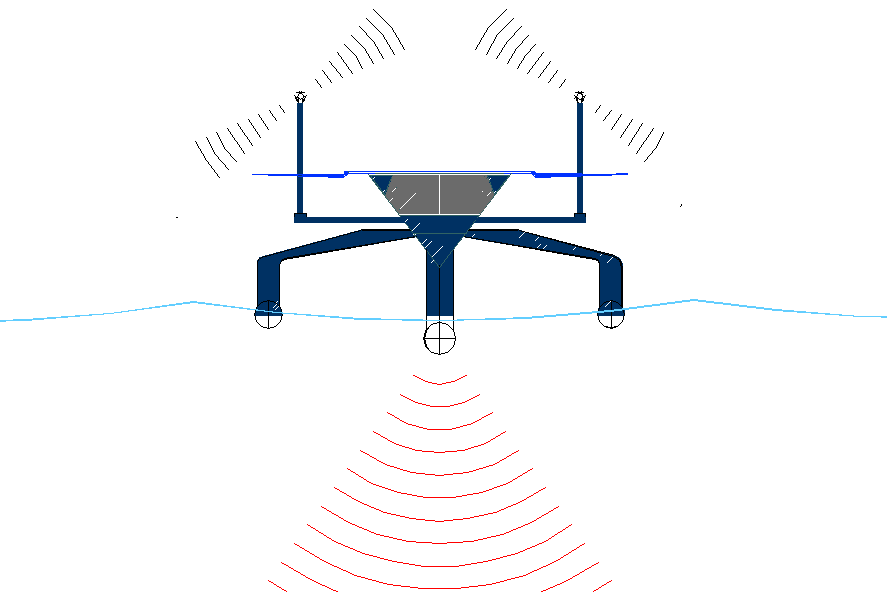
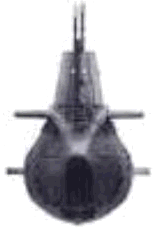
SUBMARINE
HKs - If the submerged nuclear submarine
shown above has a crew on board (most
likely) they are in grave danger, because the ASV submarine hunter-killer (HK)
on the surface above it is a drone that can either track the
submarine and pass information to
a network of marine drones, or, in times of hostilities - sink the submarine
as soon as it is located with torpedoes or depth charges.
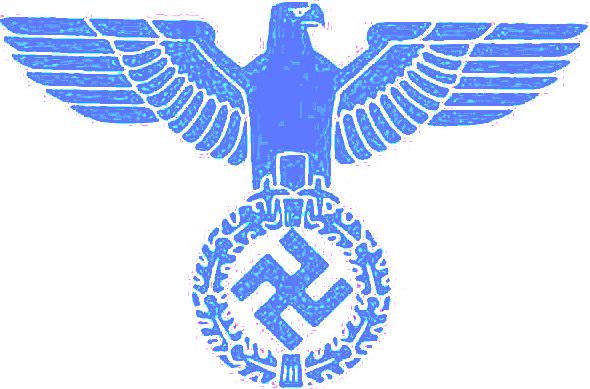
LINKS
& REFERENCE
On
Eternal Patrol uss-scorpion-589
National
Geographic k19 disasters_detail
History
the-uss-scorpion-buried-at-sea
Wikipedia
USS_Scorpion SSN-589
U-boat-skipper-ruthlessly-torpedoed-British-ship-defied-Hitler-rescue-survivors
http://www.britannica.com/EBchecked/topic/612159/U-boat
Solved-Mystery-missing-WW1-German-submarines-uncovered-explorers-remains-41-U-boats-UK-coast
http://www.historylearningsite.co.uk/u-boats.htm
Uboat
U-boat
archive
http://www.submerged.co.uk/u534.php
https://en.wikipedia.org/wiki/U-boat
http://www.uboatarchive.net/
http://www.uboat.net/
http://www.lusitania.net/lastrestingplace.htm
http://www.history.navy.mil/wars/korea/minewar.htm
http://www.oneternalpatrol.com/uss-scorpion-589.htm
http://www.nationalgeographic.com/k19/disasters_detail1.html
http://www.historynet.com/the-uss-scorpion-buried-at-sea.htm
http://en.wikipedia.org/wiki/HMHS_Britannic
hhttp://en.wikipedia.org/wiki/HMHS_Britannic
http://en.wikipedia.org/wiki/Admiralty_Mining_Establishment
http://en.wikipedia.org/wiki/Naval_mine
http://www.enterprise-europe-scotland.com/sct/news/?newsid=4306
http://en.wikipedia.org/wiki/USS_Scorpion_%28SSN-589%29
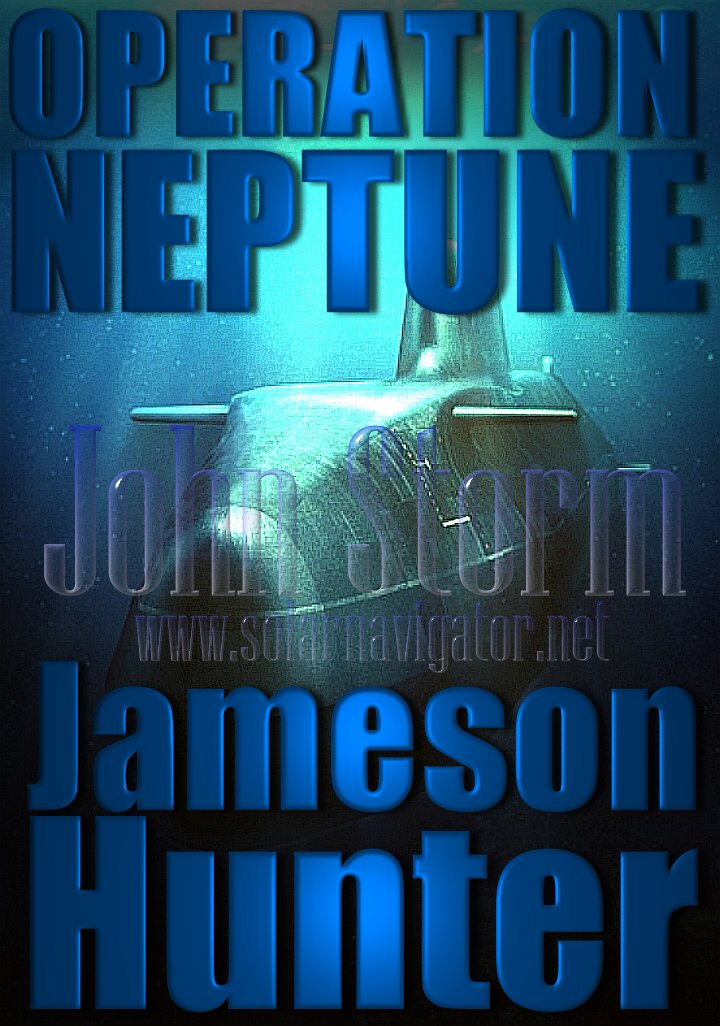
FICTION
Operation
Neptune - An
advanced nuclear submarine is hijacked by environmental extremists intent on
stopping pollution from the burning of fossil fuels. The extremists torpedo a
number of oil wells as part of a campaign to cause energy chaos, with bigger
plans to come. If you enjoyed Under Siege or
The Hunt for Red
October, this is a
must for you.
|






